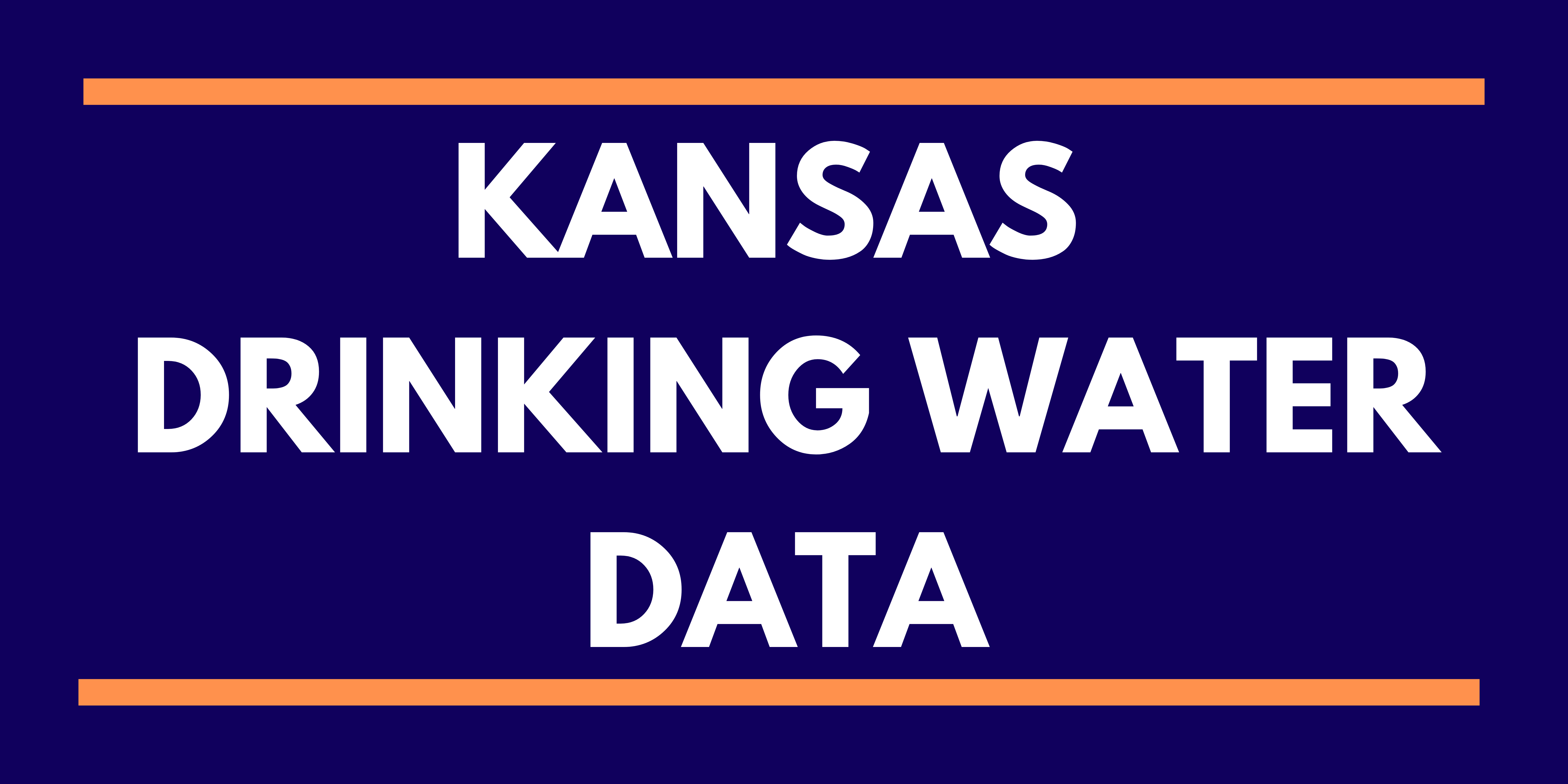Community Drinking Water Data
To explore community drinking water, click on the icon below:

EPA's How's My Waterway Tool
The Environmental Protection Agency (EPA) has an interactive How's My Waterway tool that was designed to provide the general public with information about the condition of their local waters based on data that states, federal, tribal, local agencies and others have provided to EPA. Water quality information is displayed on 3 scales in How’s My Waterway; community, state and national. To check it out click on How's My Waterway . Community Drinking Water Quality
Approximately 90% of people in the United States get their water from a community water system. These public water systems are required to provide drinking water that meets standards established under the Safe Drinking Water Act (SDWA). The environmental protection agency establishes drinking water standards for individual contaminants and groups of contaminants. Drinking water protection programs at the state and federal levels play a critical role in ensuring high quality drinking water and in protecting the public's health. Drinking water quality is an important public health issue because contamination in a single system can expose many people at once. Safe clean drinking water is essential to life. In
Kansas, about 75% of state residents are provided with drinking water by regulated public
water systems. If your water is provided by a public water system, the
state of Kansas and the US EPA monitor the levels of pollutants in your drinking
water system.
Community Drinking Water Contaminants
Contaminants in drinking water are of concern to the public’s health because many people can be exposed to them, especially from large Community Water Systems. Contaminants in drinking water can be either natural or man-made. People can be exposed to contaminants in drinking water not only by drinking the water, but also by eating foods prepared with the water, breathing water droplets or chemicals released from the water while showering, or by absorbing chemicals through their skin while bathing. Information is provided about the levels of four contaminants in drinking water: nitrate, arsenic, disinfection by-products, and lead. These contaminates were selected by the Tracking Network because they occur more frequently in drinking water than other contaminants at levels that may be of public health significance.
People in cities frequently drink water that comes from surface water sources such as rivers and lakes. When thinking about where drinking water comes from it's important to consider the entire watershed, which is the land area over which water flows into the river, lake, or reservoir. As water flows in streams, sits in lakes, and filters through layers of soil and rock in the ground it dissolves and absorbs the substances that it touches. Rural communities are more likely to drink groundwater that was pumped from a well. These wells tap into groundwater aquifers, which are the natural reservoirs under the earth's surface. As with surface water, natural and human activities may affect the quality of groundwater.
Safe Drinking Water Information System (SDWIS)
The EPA Safe Drinking Water Information System (SDWIS) contains information about public water systems and their violations of EPA's drinking water regulations, as reported to EPA by the states. These regulations establish maximum contaminant levels, treatment techniques, and monitoring and reporting requirements to ensure that water systems provide safe water to their customers. You can search through the link provided below to find your drinking water supplier and view its violations and enforcement history since 1993.
To go to the EPA site click on SDWIS
EPA Drinking Water Mapping Application
The US Environmental Protection Agency has provided the Drinking Water Mapping Application to Protect Source Waters (DWMAPS). This online mapping tool provides information to the public, water system operators, state programs, and federal agencies about drinking water. DWMAPS allows users to learn about their watershed and understand more about their water supplier. It also lets users see if sources of their drinking water are polluted and if there are possible sources of pollution that could affect their communities’ water supply.
The mapping system will not display the locations of Public Water System facility intakes, but it does contain a wide variety of data useful to the protection of drinking water sources. EPA developed DWMAPS in consultation with EPA regional drinking water programs, state drinking water regulators, and public water systems.
To access the mapping application click on DWMAPS .
Resources